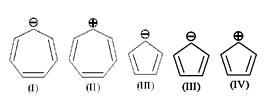Which of the following complex species is not expected to exhibit optical isomerism ?
[Co(en)(NH3)2Cl2]+
[Co(en)3]3+
[Co(en)2Cl2]+
[Co(NH3)3Cl3]
The correct Answer is:D
To determine which of the following complex species is not expected to exhibit optical isomerism, we need to analyze each option based on the principles of coordination chemistry, particularly focusing on the geometry of the complexes and the presence of chiral centers.
1. Understanding Optical Isomerism:
- Optical isomerism occurs when a compound can exist in two forms that are mirror images of each other, known as enantiomers. For a complex to exhibit optical isomerism, it must lack an internal plane of symmetry.
2. Analyzing Each Complex:
- Option 1: (Co(en)(NH3)2Cl2)+
- This complex has a bidentate ligand (en) and two monodentate ligands (NH3 and Cl). The geometry is likely octahedral (MAA2B2 type). The cis form can exhibit optical isomerism since it can form enantiomers.
- Option 2: (Co(en)3)3+
- This complex consists solely of the bidentate ligand (en). It is also octahedral (MA3 type) and can exhibit optical isomerism as it can form two enantiomers due to its chiral nature.
- Option 3: (Co(en)2Cl2)+
- This complex has two bidentate ligands (en) and two monodentate ligands (Cl). It can also exist in different geometrical forms (cis and trans) and can exhibit optical isomerism due to the presence of chiral centers.
- Option 4: (Co(NH3)3Cl3)
- This complex consists of three monodentate ligands (NH3) and three monodentate ligands (Cl). It can exist in facial (fac) and meridional (mer) isomers. However, both forms have an internal plane of symmetry and do not exhibit optical isomerism.
3. Conclusion:
- The complex that does not exhibit optical isomerism is Option 4: (Co(NH3)3Cl3).
Final Answer:
The complex species that is not expected to exhibit optical isomerism is Option 4: (Co(NH3)3Cl3).
- Optical isomerism occurs when a compound can exist in two forms that are mirror images of each other, known as enantiomers. For a complex to exhibit optical isomerism, it must lack an internal plane of symmetry.
- Option 1: (Co(en)(NH3)2Cl2)+
- This complex has a bidentate ligand (en) and two monodentate ligands (NH3 and Cl). The geometry is likely octahedral (MAA2B2 type). The cis form can exhibit optical isomerism since it can form enantiomers.
- Option 2: (Co(en)3)3+
- This complex consists solely of the bidentate ligand (en). It is also octahedral (MA3 type) and can exhibit optical isomerism as it can form two enantiomers due to its chiral nature.
- This complex has two bidentate ligands (en) and two monodentate ligands (Cl). It can also exist in different geometrical forms (cis and trans) and can exhibit optical isomerism due to the presence of chiral centers.
- This complex consists of three monodentate ligands (NH3) and three monodentate ligands (Cl). It can exist in facial (fac) and meridional (mer) isomers. However, both forms have an internal plane of symmetry and do not exhibit optical isomerism.
- The complex that does not exhibit optical isomerism is Option 4: (Co(NH3)3Cl3).
The complex species that is not expected to exhibit optical isomerism is Option 4: (Co(NH3)3Cl3).
Topper's Solved these Questions
- COORDINATION COMPOUNDS BOOK - NCERT FINGERTPS ENGLISHCHAPTER - COORDINATION COMPOUNDS EXERCISE - HOTS
8 Videos
- COORDINATION COMPOUNDS BOOK - NCERT FINGERTPS ENGLISHCHAPTER - COORDINATION COMPOUNDS EXERCISE - NCERT EXEMPLAR PROBLEMS
14 Videos
- CHEMISTRY IN EVERYDAY LIFE BOOK - NCERT FINGERTPS ENGLISHCHAPTER - CHEMISTRY IN EVERYDAY LIFE EXERCISE - NCERT Exemplar
15 Videos
- ELECTROCHEMISTRYBOOK - NCERT FINGERTPS ENGLISHCHAPTER - ELECTROCHEMISTRYEXERCISE - Assertion And Reason
15 Videos
Similar Questions
Knowledge Check
Which of the following species is not expected to be a ligand?
ANOBNH+4CNH2CH2CH2NH2DCO
Which of the following species is not expected to be a ligand?
View SolutionWhich of the following species is not expected to be a ligand?
View SolutionWhich of the following compounds is expected to exhibit optical isomerism?
[en ethylenediamine]
View SolutionAn octahedral complex having formula Ma2b2C2, which of the following combination is possible to exhibitd optical isomerism
View SolutionWhich one of the following is expected to exhibit optical isomerism (en=ethylenediamine)?
View SolutionWhich of the following species would be expected to exhibit aromatic character?

View SolutionWhich of the following complex is optically inactive
View Solution
